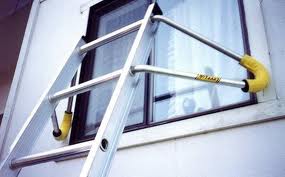Strata Cleaning News August
This Month’s News…
Water Restrictions – Stage 2 – Commercial Cleaning Services = NO Impact
COR Certification – How Does It Help Our Customers ?
Virtual Supervision – Janitorial Mgmt. – How Does It Work?
Summer Discount Schedule
-
- 15 % Exterior Services – Building Washing – Roof Treatment – Soft Washing – Window Cleaning
- 25 % Janitorial Mgmt. – Caretaker Services – First Month

 their construction and designs. Dryer vents are no exception. The image most people have of dryer vents are round three to four inches in diameter circular metal pipe with a flap on the end. While this is a common (if not the most common) design, especially for low-rise buildings, there are a number of different configurations that are employed.
their construction and designs. Dryer vents are no exception. The image most people have of dryer vents are round three to four inches in diameter circular metal pipe with a flap on the end. While this is a common (if not the most common) design, especially for low-rise buildings, there are a number of different configurations that are employed. , if it is even an option, can run into the tens of thousands of dollars. The alternative is to build a new duct run with a drop down ceiling. While less costly than concrete reconstruction, it can be aesthetically ugly and diminish a unit’s value.
, if it is even an option, can run into the tens of thousands of dollars. The alternative is to build a new duct run with a drop down ceiling. While less costly than concrete reconstruction, it can be aesthetically ugly and diminish a unit’s value. What do we use? Gutter Spoons. Now this might look like its one step away from a salad spoon from the kitchen drawer, but it really is the most effective solution. To use the spoon, you need to be above the gutter, so you have an unobstructed view of what is going on. Its much easier to ensure that the system is working. Second, it allows our technicians to quickly remove a large amount of material from a gutter, but with the added advantage of being able to reach deep into its corners and crevices. Finally, its light: we can use spoons while walking on the roof, or on top of a ladder. .
What do we use? Gutter Spoons. Now this might look like its one step away from a salad spoon from the kitchen drawer, but it really is the most effective solution. To use the spoon, you need to be above the gutter, so you have an unobstructed view of what is going on. Its much easier to ensure that the system is working. Second, it allows our technicians to quickly remove a large amount of material from a gutter, but with the added advantage of being able to reach deep into its corners and crevices. Finally, its light: we can use spoons while walking on the roof, or on top of a ladder. .




